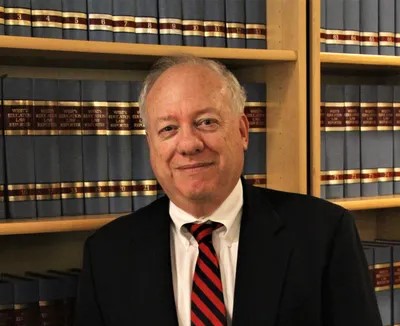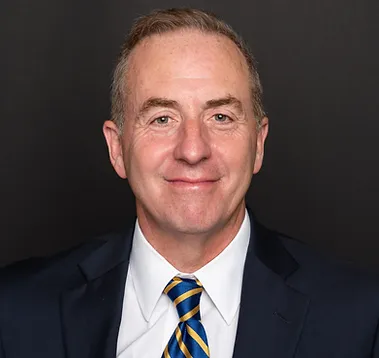Demographers contend that more than one-half of all marriages in America will end by divorce rather than by death. 1 As a consequence, practitioners often are required to undertake estate planning for a property owner who is in a second or subsequent marriage and has descendants from a prior marriage.
Such a situation significantly complicates the planning procedures and options. It also presents the practitioner with a special opportunity to reduce the conflicts which are so likely to arise between the descendants of the prior marriage and the present spouse. In order to accomplish that goal, the practitioner should understand how conflicts are likely to arise and be prepared to recommend steps to reduce the chances of their arising or, at least, to reduce their impact. This article will discuss some of the major factors to consider when representing individuals who are in these marital situations.
Ethical Considerations
It appears that the ethical rules which control attorney actions are now receiving more attention than they did in the recent past. Paralleling this interest is the “explosion” in suits alleging attorney malpractice. Unfortunately, many of these suits are premised upon violation of ethical rules. 2
Needless to say, attorneys should always try to avoid violating ethical rules. Unfortunately, a number of these rules can raise problems for the estate planner; in particular, the actual or potential conflicts of interest which can arise when the attorney is representing several members of the same family. 3 The possibility that such ethical problems will occur is substantially increased when an attorney attempts to represent both the property owner and the “latest” spouse.
It may be extremely difficult to counsel a wife, for example, on how to take action to minimize the amount which will be subject to her husband’s “right-of-election” at her death while counseling the husband about his own estate planning affairs. Even if the spouses have entered into a prenuptial or similar agreement under which each has waived all rights to share in the other’s estate, questions such as the enforceability of the agreement may come up in the course of the dual representation.
In such situations, if not in all cases involving a subsequent marriage, it may be appropriate to send a “conflicts” letter, explaining to the spouses the possibility of conflicts in the planning of their estates and the rules which will control the attorney’s actions. In fact, some attorneys follow the practice of sending a conflicts letter to every married couple, even if it is a first marriage for both spouses. The attorney may advise the clients at the first meeting that the ethical rules suggest the need for such a letter, ask that they review it carefully and, if they find the proposal for dealing with conflicts appropriate, request that they sign the letter and return it to the attorney. 4
One area where experienced practitioners sharply disagree is on how much information regarding one spouse’s private matters should be disclosed to the other spouse. For example, some believe that the attorney should advise the husband and wife that the attorney will not reveal to the other spouse information which is given in confidence. They feel that these confidences should be kept, even if the spouse takes action in reliance on what he or she believes the other spouse is doing and even though the attorney knows that reliance is misplaced. Others take just the opposite view. They believe they should advise clients that they will feel free to, and, indeed, in some instances may feel compelled to, make known to each spouse any information supplied by or about the other. Still another group of attorneys believes that they should rely solely on the ethical rules. Although, perhaps, not definitive, it appears that an attorney may be required to resign from representing both spouses if the attorney has gathered information from one spouse that should not be disclosed to the other. 5
The problem of dealing with disclosures has caused some attorneys to adopt a policy of representing only one of the spouses in any subsequent marriage situation. In the “real world”, this may be difficult to do, especially if it is likely to result in losing both spouses as clients. However, regardless of how the attorney decides to handle the matter, a conflicts letter probably is a good place to start.
Conflicts also can arise during the administration of the estate of the first spouse to die. For example, there may be a claim that the surviving spouse has not received the share of the deceased spouse’s estate to which the survivor is entitled under right of election or community property rules, or under a partnership or prenuptial agreement. If the attorney is also representing the deceased spouse’s children by a prior marriage, the potential for conflict becomes very great. See A.B.A. Code of Professional Responsibility, EC517. In these circumstances as well, a conflicts letter probably should be sent to all members of the family. See a/so the January 1990 issue of The Chase Review for a discussion of certain ethical matters relating to attorney’s.
Restrictions on Disposition of Assets
Elective Share
Generally, a person is free to dispose of his or her property in any lawful manner. However, in most jurisdictions within the United States, the rights of a surviving spouse limit one’s ability to transfer property for estate planning or other purposes. For example, many states have rules requiring that at least a minimum share of the estate of the first spouse to die be transferred, either outright or in an alternative qualifying form, to the surviving spouse. If the survivor does not receive that minimum share, he or she will have a claim against the deceased spouse’s estate. See, e.g., N.Y. Estates, Powers and Trusts law (“EPTL”) §5-1.1, (1981) (1990 Supp.) N.J.S.A. § 38:8-1 ( 1987) (1990 Supp.), F.S.A. § 732.201 (1985) (1990 Supp), 21 O.R.C. § 2107.39 (1990). See generally 8 U.L.A. 1 (listing states that have adopted uniform elective share provisions of Uniform Probate Code). These minimum share rights vary from jurisdiction to jurisdiction. The percentage or fraction of the estate due the spouse and the form in which the surviving spouse is to receive it vary, as does the “makeup” of the “estate” against which the minimum share rights may be exercised and satisfied. Compare New York’s EPTL 5-1.1 (using the concept of “testamentary substitutes” as well as the probate estate) with Florida’s F.S.A. 732.201 (1985) (1990 Supp.) (no concept of testamentary substitutes) and New Jersey’s N.J.S.A. § 3B:8-1 (1987) (1990 Supp,) (using the concept of “augmented estate”). The effect of these statutes is of course, that the property owner may be required to transfer a significant portion of his or her wealth to the surviving spouse, thereby limiting what he or she may bequeath to others. 6
Equitable Distribution
There may also be restrictions on transferring property during lifetime. Generally, on the breakdown of a marriage during lifetime, each spouse will be “seized” with certain “equitable distribution” rights. See, e.g., F.S.A. § 61.075, (1985)(1990 Supp.) N.Y. Dom. Rel. law § 236 (1988) (1990 Supp.), N.J.S.A. § 2A: 34-23,23.1. (1987) (1990 Supp.) See generally, D. Freed, Equitable Distribution as of December 1982, Vol. 9, No. 10, Family Law Reporter (1983). Although the concept of equitable distribution also varies from state to state, as a general rule the court having jurisdiction over the matrimonial action may direct the transfer of property from one spouse to another in order to achieve “equity” (as contrasted with the statutory fixed minimum share entitlement at death). Here again, the concept of what is in the asset “basket” against which equitable distribution rights may be applied varies from state to state.
To the extent that a spouse has rights under equitable distribution or minimum share statutes, the property owner will be inhibited in the disposition of his or her wealth. Practitioners must be aware of these rights and aware that they may change significantly if a party is domiciled at death in a jurisdiction different from that under which planning takes place.
Community Property
. In a smaller number of states spousal rights to assets usually take the form of community property. Community property systems are complex and they too vary from jurisdiction to jurisdiction. Basically, they provide that all assets acquired during marriage (other than by gift and inheritance) constitute community property of which each spouse owns one-half, almost as though the assets were held in a tenancy-in-common. As a consequence, a property owner generally may dispose of only his or her one-half of the community assets.
Practitioners in non-community property jurisdictions must be cognizant of community property rights. Several non-community property jurisdictions have adopted the uniform disposition of community property at death act. See, e.g., EPTL §§ 6-6.1 to 6-6.7. Under this act, community property assets of a married person who moves to a non-community property jurisdiction are treated as community property at his or her death. For example, a couple residing in California sells their community property residence and moves to New York. When one of them dies, the proceeds of that sale may be treated as community property under EPTL § 6-6.1. As a result, the property owner will generally be able to dispose of only one-half of the asset. See EPTL § 6-6.3.
REACT
In the Retirement Equity Act of 1984 (“REACT”), Congress enacted a semi-community property rule for interests in qualified employee retirement plans. As a rule, unless the non-participant spouse consents and waives the right, the plan must provide for the payment of benefits in the form of a joint and survivor annuity for the life of the participant and the spouse.
I.R.C. §§ 401(a)(11) and 417. Generally, the spouse who is married to the participant at the time that the participant first began to receive the annuity payments from the qualified plan is the spouse “vested” with the joint and survivor annuity rights. Treas. Reg. § 1.401(a)- 20, Q/A 25. Thus, if a participant dies after the annuity starting date, the spouse to whom the participant was married on the annuity starting date is generally entitled to the annuity, even if the participant and the spouse were not married at the participant’s death. (There may be an exception for marriages that last less than one year, and for transfers pursuant to a qualified domestic relations order (“QDRO”).)
Interests in qualified plans often represent a significant part and, in some cases, the major portion of the wealth to be disposed of at death. Although under the law of many states interests in qualified plans are not subject to, nor do they satisfy, a surviving spouse’s right to a minimum share of the estate, the REACT provisions may curtail the plan participant’s ability to control the disposition of the assets in the qualified plan.
Oral Partnerships ad Agreements
A property owner’s ability to dispose of assets also may be controlled by contract. Very often, owners of a closely-held business, for example, will be required to sell their interests in the business upon death either to the business itself or to the surviving partners or shareholders under specified terms and at a specified price. Alternatively, the business documents may allow a business participant to transfer his or her holdings only to a small group of persons. 7
In addition, courts have found the existence of legally enforceable oral partnerships or agreements between spouses. See, e.g., Chocknok v. State, Commercial Fisheries Entry Com., 696 P.2d 669 (Alaska 1985); Estate of Trafton, 27 T.C. 610 (1956). See also Nolan Estate, T.C. Memo 1984-206; Estate of Peterson v. United States, 1984-1 U.S.T.C. ¶ 13,570 (D.Minn. 1983); Marvin v. Marvin, 18 Cal.3d 660, 557 P. 2d 106 (1976). As a consequence, the practitioner may find that a property owner’s spouse is asserting that he or she has an interest in the property by reason of an oral partnership or agreement.
Prenuptial and Postnuptial Agreements
Although a prenuptial or postnuptial agreement typically acts as a “shield” against the claims of a surviving spouse (as discussed below), in some cases such an agreement will create rights in the surviving spouse by providing, for instance, that the surviving spouse is to receive a minimum share of the deceased spouse’s estate or a minimum dollar amount. Further, claims have been brought by children of prior marriages as third party beneficiaries under prenuptial agreements between the spouses. The descendants have contended they are beneficiaries of the prenuptial agreement and that their parent could give to the surviving spouse no more than that specified under the agreement. See White v. White, 20 AD. 560 (1897); 41 AmJur2d, Husband and Wife §§ 300, 301.
Legal Defenses
Prenuptial Agreements
Often, a person with descendants from a prior marriage will wish to minimize the amount which is transferred to his or her surviving spouse. Probably, the most effective way to achieve that result is by entering into a prenuptial or similar agreement prior to the marriage. Generally a prenuptial agreement must be fairly made, without fraud or overreaching. States vary in requiring, in addition to fairness in the circumstances surrounding execution, that the substantive terms of the agreement be fair. See annots., 53 ALR4th 85 and 53 ALR4th 161. Special statutory requirements may also apply. 8 Although the absence of either factor will not necessarily invalidate a prenuptial agreement, each spouse should make full disclosure of his or her assets and all other relevant facts and circumstances, and each spouse should be represented by independent counsel. See, e.g., Hoffman v. Hoffman, 100 A.D.2d 704 (3d Dept 1984); Estate of Miller, 97 A.D.2d 581 (3d Dept. 1983); In the Matter of Sunshine, 51 A.D.2d 326 (1st Dept.), aff’d 40 N.Y.2d 875 (1976).
Relevant issues under a prenuptial agreement include:
1) waiver of the right of election; 2) waiver of the right to intestate distribution; 3) waiver of dower and courtesy rights; 4) waiver of community property rights; 5) waiver of homestead rights, and 6) an agreement to waive retirement benefits. The agreement may also address rights that may arise incident to divorce (such as maintenance), in which case the agreement may be subject to more stringent standards of fairness. Other matters may also be covered. For example, in many states a spouse has priority to serve as a conservator, guardian or committee in the event of disability of the other spouse or to serve as a fiduciary under the spouse’s Will. The practitioner may wish to include language dealing with these points in the agreement.
If a spouse is going to agree to transfer a minimum share of his or her estate to the other spouse, an amount or percentage should be specified as opposed to an indefinite standard such as “some” or “substantial”. The agreement should also specify whether and to what extent the interest can be given in trust. If a trust may be used, the issue of whether the trustee can hold or invest in property which is nonproductive or underproductive of income should be addressed. Practitioners must also be extremely careful to define what is meant by “estate”. In some cases, it will be appropriate to use a definition in a statute (see, e.g., New Jersey’s N.J.S.A. §§ 3B:8-3, 3B:8-5 and 38:8-6, defining “augmented estate”). The agreement should specifically cover whether pre-death transfers (whether for full value or by gift) will be included in the base of the “estate”.
If one spouse intends to give the other assets that are “unique” (for example, family heirlooms or items used in a closely held business), it may be appropriate to provide that the donor-spouse or his or her descendants will have the right to repurchase those unique assets upon the death of the donor-spouse or if other events (such as divorce) occur.
If the parties lived together prior to the marriage, any “Marvin v. Marvin”-type claims should be waived. 9 It may be appropriate to specify how the parties will “share” the burden of income taxes if they choose to file joint returns or gift tax liability if they agree to “split gifts” from time to time.
Some recommend that “it is wise to have the prenuptial agreement recite those rights that the surviving spouse would have in the absence of the agreement.” Fieldman & Fieldman, “Pour Over Your Lives: Estate Planning for the Second Marriage”, 74 Ill. Bar Journal 92 (October 1985), p. 93.
Separation of Assets
Unless there is a prenuptial agreement which adequately deals with the matter, it probably is appropriate to create and maintain a detailed record of the assets each spouse brought to the marriage in order to establish that those assets are neither community property nor subject to equitable distribution. Over time, however, the identity of the property may change. Hence, it may be appropriate to place such assets in a separate account. One effective way to do that is to have each spouse create a revocable lifetime trust and transfer title to the assets to that trust prior to the marriage. 10 Any other non-community or non-marital assets acquired during the marriage (such as, in some states, income earned on separate assets or gifts or inheritances received during marriage) could also be placed into the revocable trust. However, it is probably better (if the amounts involved warrant it) to add these assets to a separate revocable trust so as to distinguish between assets brought to the marriage and those acquired during the marriage.
Acquisition of Special Assets
Another potentially effective “defense” is for the spouse to acquire assets which will not be subject to the minimum share rules if he or she is the first to die. In New York, for example, life insurance proceeds are not subject to the survivor’s right of election. Similarly, such proceeds received by a surviving spouse do not satisfy his or her elective rights. EPTL § 5-1.1(b)(2) and (c)(1)(A); In re Brown’s Estate, 27 Misc.2d 821 (1960). In contrast, in New Jersey, insurance proceeds payable to the surviving spouse are part of the “augmented estate” in which the spouse is entitled to share, and may be used to satisfy the spouse’s claim against the augmented estate. N.J.S.A. §§ 3B:8-5, 8-6 and 8-7.
Lifetime Transfers
A property owner may also make pre-death transfers which remove the property from the spouse’s claims. However, see, e.g., EPTL 5-1.1(b)(1)(A)-(E), which provides that gifts causa mortis, property held in certain revocable trusts and “Totten trusts”, and property held in joint and survivorship forms of ownership will be “brought back” into the elective share estate. In some community property jurisdictions, gifts made long before death remain subject to the non-donor spouse’s community property claims unless he or she consented to the gift. See West’s Ann. Cal. Civ. Code § 5125(b) (1983) (1990 Supp.).
Establishing the Estate Planning Goals
Almost every property owner will have somewhat conflicting estate planning goals. For example, the wish to maximize property available for the surviving spouse may conflict with the desire to maximize the amount available for descendants. Leaving assets outright to the surviving spouse maximizes the spouse’s economic interest but decreases the probability that those assets will ultimately be received by the property owner’s descendants. In addition, the mere “time value of money” generally will dictate that the descendants will be better off financially if no (or fewer) assets are left to or for the benefit of the surviving spouse so that the descendants receive their inheritance earlier, even if that inheritance is diminished by greater taxes. At least in some cases, a bequest of less than the “maximum” marital deduction may actually increase the net amount available for those who will take after the death of the surviving spouse. See generally “Economic Ramifications of the Use of The Marital Deduction and Related Matters,” The Chase Review (October 1985).
Obviously, these conflicting goals may become more pronounced in a “second” marriage situation. For example, the second spouse may be roughly the same age or younger than the descendants of the prior marriage. The experienced practitioner may be able to provide meaningful counseling as to what is “fair” and “reasonable” in such a situation. However, in advising on the best dispositive plan, the attorney must be sensitive to ethical obligations to any other family members, including the other spouse, who are also represented by that attorney.
Division of the Estate
Once the property owner determines the priority of his or her goals, the practitioner must work with the owner on devising the most appropriate way to manage the division of the estate. A common method of dividing interests between the descendants of a prior marriage and tile surviving spouse is to use a tax oriented formula clause. Prior to 1982, for example, a property owner would be advised to leave his or her spouse, either outright or in a trust qualifying for the marital deduction, an amount equal to one-half of the adjusted gross estate, which was tile maximum amount allowable as a marital deduction at that time. Today, some practitioners counsel leaving the descendants of the prior marriage the so-called “estate tax exemption equivalent amount” which can be as great as $600,000.
However, it is a mistake to use tax oriented formula clauses to divide an estate between the spouse and the descendants. Tax oriented formula clauses are almost guaranteed to cause conflict. See Trachtman, “Leaping in the Dark – More Adventures with Marital Deduction Formulae”, 93 Trust & Estates 922 (1954). Conflicts will arise as to whether to deduct administration charges on the estate tax or fiduciary income tax return (see, e.g., In Re Warms, 140 N.Y.S.2d 169 (Surr. Ct. N.Y. Cty. 1955)); when to value assets in the estate (In re Colp, N.Y.L.J., January 20, 1976, P.8, Col. 2 (Surr. Ct. N.Y. Cty.)); how to value the assets in the estate (Smail v. Smail, 617 S.W. 2d. 889 (Tenn. 1981)), when to make distributions (Harkness v. United States, 469 F.2d 310 (Ct. CL 1972), cert. denied, 414 U.S. 820 (1973)) and what “type” of bequest has been made (In re Bush, 2 A.D.2d 526 (4th Dept. 1956), aff’d, 3 N.Y.2d 908 (1956)). Each of these decisions can have a tremendous impact on how much the descendants and the surviving spouse receive. For example, using administration expenses for income tax purposes will have the effect of placing the burden of those expenses exclusively upon the descendants if they are given the estate tax exemption amount (unless the Will provides otherwise). On the other hand, if the expenses are deducted for estate tax purposes, the surviving spouse will bear them all. 11
Generally, a better plan is to provide for the beneficiaries to receive legacies of specified items of property, pecuniary (fixed sum of money) bequests not dependent upon tax-driven concepts, or percentages or fractional shares of the residuary estate. However, conflicts may arise even with those types of legacies. For example, in a recent but as yet unreported Colorado case, a man left one-half of his residuary estate outright to his son by a prior marriage and the other half outright to his surviving spouse. He directed that all death taxes be paid from the son’s half of the residue because tile half going to the wife qualified for the estate tax marital deduction. His estate consisted largely of assets that were not readily marketable. Tile son has charged that his former stepmother, as executor, is seeking to establish an unreasonably high estate tax value for the assets in order to increase her basis in her share of the decedent’s estate. Obviously, the higher the estate tax value, tile greater the son’s burden of estate tax will be.
Perhaps, an even better route is to separate the “inheritances” for the descendants and the surviving spouse. For example, if the surviving spouse will not have any effective right of election or similar claims, pre-death gifts to a trust for the spouse to purchase, for example, a life insurance policy on the life of the property owner may reduce conflicts.
Choice of Fiduciary
The choice of the executor, trustee or guardian is always one of the most critical decisions in the estate plan. Property owners rarely appreciate the importance of that choice or recognize that the fiduciary becomes the substitute decision-maker for the property owner after death. Lawyers typically counsel significant flexibility to permit post-mortem tax and property planning and that, almost of necessity, suggests granting the fiduciary extremely broad powers.
The choice of the fiduciary may depend, in part, upon the division of the estate. For example, in In re Colp, N.Y.L.J., January 20, 1976, P.8, Col. 2 (Surr. Ct. N.Y.Cty.), the decedent’s son by a prior marriage and the surviving spouse disagreed as to whether date of death or alternate valuation should be selected for estate tax purposes. See LR.C. § 2032. The widow had been given a tax-driven formula bequest the size of which depended upon that (and other} tax elections. If only one of them had been named the executor, it is possible that he or she would have made the decision which favored him or herself the most. Although there might have been a claim of abuse of fiduciary discretion, it is somewhat likely that a court would not have reversed the decision. See, e.g., Smail v. Smail, 617 S.W. 2d 889 (Tenn. 1981). Naming both the surviving spouse and the child of a prior marriage as co-executors may provide a type of balance, but it greatly increases the probability of litigation, as in Colp. A better choice in such circumstance may be to select an independent fiduciary, unless the interests of the family members are divided in such a way that conflict is not likely to arise (for example where the “inheritance” for one of them has been funded by life insurance).
The Marital Deduction
For a variety of reasons, most property owners wish to use the estate tax marital deduction for transfers to or for the benefit of their surviving spouse. The marital deduction, however, generally does not avoid tax but only postpones it. Property which qualifies for the marital deduction in the estate of the first spouse to die will be includable in the estate of the survivor unless it is consumed or otherwise dissipated during the survivor’s lifetime.
In most cases, the surviving spouse will be better off if his or her inheritance is protected by the marital deduction. Those who will take the property after the surviving spouse dies may have a different perspective. Before 1982, a property owner might have been reluctant to use the marital deduction to benefit a second spouse because, in effect, the property would qualify for the marital deduction only if the spouse controlled its ultimate destiny. See, e.g., I.R.C. § 2056(b)(5) (marital deduction trust over which the surviving spouse has a general power of appointment). Since 1982, however, the tax law has allowed a marital deduction for qualified terminable interest property (“QTIP”) under I.R.C. § 2056(b)(7). Generally, a QTIP allows the property owner to obtain the benefit of the marital deduction plus the assurance that the property will eventually pass to his or her descendants. The QTIP can be used for a variety of assets, including tangible personal property and residences, and need not be in the form of a trust. See, e.g., Prop. Treas. Reg. § 20.2056(b)- 7(e), Example (1); NOTAM 8948002.
However, QTIPs may present problems of their own. For example, the property owner must direct the trustee of the QTIP trust to make the property productive or give the surviving spouse the right to demand that it be made productive. Treas. Reg. § 20.2056(b)- 5(f). If a significant portion of the estate consists of unproductive assets (such as an interest in a closely-held corporation which does not pay dividends, or vacant land), a potential conflict arises between the use of a QTIP trust and the goal of preserving such assets for descendants. 12
In order to avoid the problems of making the QTIP Trust productive of income during the surviving spouse’s lifetime, consideration may be given, as an alternative, to a so-called “estate trust”. 13 The trustee of an estate trust may be authorized, or even directed, to accumulate income and the trust need not be productive of income during the survivor’s lifetime. However, the estate trust must be paid to the probate estate of the surviving spouse so the spouse will control the destiny of the property. As a consequence, significant “tension” may exist between the desire to preserve certain assets, which are not likely to produce income for the property owner’s descendants, and the desire to obtain the benefit of the marital deduction.
Tax Apportionment
The apportionment of death tax always is an extremely important factor in the estate plan. See, generally “The Tax Apportionment Clause – Often the Most Important Provision in the Will”, The Chase Review (November 1987). Apportionment problems may be “compounded”, however, when a surviving spouse and descendants from a prior marriage share in the property owner’s estate. Often, a property owner who has grown fond of his or her spouse’s children will decide to use a QTIP trust for the benefit of the surviving spouse and provide for the property in the QTIP trust to pass to the spouse’s children. However, because a trust described in I.R.C. § 2056(b)(7) qualifies for the marital deduction only upon an election by the executor, it is critically important to determine how the estate tax with respect to that “QTIPable” trust will be apportioned if the executor does not elect to qualify it for the marital deduction. Otherwise, even though the trust may pass to the survivor’s family, the estate tax burden with respect to the trust may be imposed on the family of the deceased spouse. For example, a QTIPable preresiduary trust is created for the surviving spouse with remainder over to the survivor’s family; the residue passes to the decedent’s children. Because it is anticipated that the preresiduary trust will qualify for the marital deduction, the Will directs that all death taxes be paid from the residue without apportionment. However, should the executor not elect QTIP treatment for the preresiduary trust (or should the election be foreclosed for some reason), the increase in death tax due at the decedent’s death will be imposed on his or her descendants and the remainder of the trust will pass free of any tax to the surviving spouse’s descendants.
On the other hand, the attorney must attempt to avoid the inadvertent apportionment of estate taxes attributable to the QTIP to the probate estate of the surviving spouse under a “broad tax apportionment provision in the surviving spouse’s Will Cf. Will of Gordon, 134 Misc.2d 247 (Surr. Ct. N.Y. Cty 1986); but see New York’s EPTL 2-1.8(d-1). which requires that death taxes on QTIP property be paid from that property unless the Will specifically provides otherwise.
Moreover, care must be taken that taxes are not “unfairly” apportioned where the surviving spouse can control the level of death tax. For example, under I.RC. § 4980A(d)(5), the surviving spouse, in certain circumstances, can avoid the imposition of the special 15% estate tax on “excess accumulations” in qualified plans. If all taxes are apportioned against the probate estate of the spouse first to die, the 15% estate tax may be imposed upon the property owner’s descendants, rather than against the surviving spouse, even though the survivor has the “option to avoid the imposition of tax. A recent change in New York law attempts to prevent that result by interpreting tax apportionment provisions as not applying to the 15% special estate tax unless specific reference is made to that tax in the Will. See EPTL 2-1.8(d-1).
In some circumstances, such as where payments are made to the surviving spouse pursuant to a property settlement agreement, the spouse may be treated as a creditor rather than a beneficiary under local law. In such a case, the property owner may not be able to apportion taxes against the property received by the spouse, even if it does not qualify either as a deductible claim or for the marital deduction. See, e.g., Estate of Weston Vernon, 107 Misc.2d 1021 (Surr. Ct. Suffolk Cty. 1981).
Taking Advantage of the “Other” Spouse’s Estate, Gift, and Generation-Skipping Transfer Tax Exemptions
The estate and gift tax exemption “equivalent”, which may protect up to $600,000 from those taxes, and the GST exemption, which may protect up to $1 million from generation skipping transfer tax, are not transferrable. Each spouse may use his or her own exemptions for his or her own transfers or may effect such use by “splitting” lifetime gifts under I.R.C. § 2513. Often, however, property owners will wait to use their exemptions at death. If the wealthier spouse dies first, and if the survivor has insufficient property of his or her own against which to use those exemptions, it is possible to design the estate plan of the first spouse to die so as to take advantage of the survivor’s exemptions. See J. Blattmachr, D. Hastings & D. Blattmachr, “The Tripartite Will: A New Form of Marital Deduction”, Vol. 127, No. 4 Trusts & Estates, 47 (April 1988).
However, if the impecunious spouse dies first, his or her estate tax or GST exemptions may be wasted. A recent private ruling, reported in the April 1990 issue of The Chase Review, may provide a mechanism for the use of those exemptions. In Private Letter Ruling 8944009, a spouse was the beneficiary of a QTIP trust created during his lifetime. The Internal Revenue Service held that his exemptions could be applied against the assets in the QTIP trust. even though the grantor-spouse retained a secondary lite income interest, if the beneficiary-spouse was given the testamentary power to appoint the trust to the creditors of his or her estate. As a consequence, the wealthier spouse was able to obtain the use of the other spouse’s exemptions and, perhaps, be assured of receiving the benefits of the property “back” should the other spouse die first. This arrangement may also provide an opportunity to effect an early “step-up” in income tax basis under I.R.C. § 1014(a). Nonetheless, it must be remembered that the surviving spouse, according to the ruling, was given the power to appoint the trust to the creditors of his estate. 14 The surviving spouse might have an incentive in such a case to attempt to make members of his or her own family creditors of the estate or, if he or she had significant assets of his or her own, to exercise the power to satisfy the claims of creditors (including tax authorities) of his or her estate.
It seems relatively certain that if the wealthier grantor-spouse is willing to forego a secondary income interest or other powers or rights in the QTIP trust, the grantor-spouse can assure use of the impecunious spouse’s exemption by creating a lifetime QTIP trust for the impecunious spouse with remainder over to the grantor-spouse’s descendants. 15 In any event, if one spouse creates a QTIP trust for the other, an attempt should be made to insure that the grantor will get “credit” for the interest in the trust in the event of a divorce or as satisfaction of all, or part of, any minimum share rights which the surviving spouse may have against the grantor-spouse’s estate. This is best accomplished by a written agreement between the spouses. However, in the “real world” spouses often find it extremely difficult to “negotiate” about financial matters after the marriage has occurred and post-nuptial agreements also may be more difficult to sustain. Consequently, it may be better practice to deal explicitly with such matters in any prenuptial agreement.
Special Considerations for the Family Residence and Personal Use Assets
Even if not obliged to do so, one spouse may want to provide that the other can remain in the family residence and use its contents for at least a limited period of time following death. Particularly if relations between the homeowner’s descendants and the surviving spouse are not amicable, the spouse may be pressured to vacate the family residence shortly after the death of the first spouse to die. This cannot only place an unreasonable emotional burden on the survivor but also presents him or her with many practical problems in finding a new place to live. Although such a limited use interest will not qualify for the marital deduction, it should be discussed with the client. The practitioner should cover such issues as whether the surviving spouse or the estate will pay for insurance, taxes, maintenance and related expenses of the residence.
Burial Expenses and Health Care Decisions
Not infrequently, the surviving spouse and descendants of a prior marriage will disagree as to the decedent’s burial and funeral arrangements. These disagreements can be particularly troublesome if the parties do not share the same religious beliefs. One solution is to have the decedent specify the funeral and burial arrangements both in the Will and in another document which does not have to be proved in court. This is important for the surviving family members even if the decedent professes not to “care” what arrangements are made.
It is also appropriate for the practitioner to discuss with the client whether he or she wishes the spouse or another family member to make health care decisions when local law permits the use of a medical power of attorney or similar arrangement. See West’s Ann. Cal. Civ. Code, § 2432 (1983) (1990 Supp.).
Conclusions
Today, it is very common to represent married persons with descendants from prior marriages. Special care must be taken in the representation of the spouse in a second marriage. There are likely to be conflicts between the client’s descendants and the spouse; therefore, the practitioner must be careful to consider those special issues in counselling the client and recommending an estate plan. The attorney is also likely to face ethical problems whether representing both spouses or representing one spouse and descendants. Many attorneys may find it appropriate to use a “conflicts” letter.
Sometimes the potential for conflict between the client’s spouse and descendants from a prior marriage can be reduced by the execution of a prenuptial agreement. (Although a postnuptial agreement may produce the same effect. as a practical matter spouses do not make such agreements.) In addition, separating the “inheritances” of the descendants and the spouse (for instance, by funding one with life insurance) may also reduce the conflicts. Care must be taken to deal properly with any minimum share rights of the surviving spouse.
A QTIP trust can be an especially good tool in a second marriage. However, even with a QTIP trust, conflicts may arise if both the spouse and the descendants share in the probate estate, especially if any or all of them are fiduciaries under the Will. To minimize such conflicts, the estate normally should not be divided on the basis of tax oriented formula clauses. In some cases, the requirement of making the QTIP productive of income (or granting the surviving spouse the power to cause it to be productive of income) may cause problems. In all cases, special care must be given to the tax apportionment provisions in the Will.
The attorney may have to discuss matters, such as burial wishes, which he or she ordinarily would not cover if the client were unmarried or married for the first time.
Attorneys should be prepared to deal with the special needs of clients who have been married previously, particularly those who have descendants of prior marriages.
Exhibit A
Private and Confidential
Dear Mr. and Mrs. New Client:
We are honored to have the opportunity to represent you in your estate planning. We consider this to be an important representation for us, and we want to provide you with the highest level of service.
It is customary for a husband and wife to employ the same law firm to assist them in planning their estate. Nevertheless, the ethical rules relating to lawyers limit our ability to represent multiple clients. We may not represent multiple clients who have conflicting interests. We may represent multiple clients who do not have conflicting interests.
We do not believe the two of you have conflicting interests at this time and, accordingly, we may represent you both. However, the ethical rules also require us to advise you of any reasonably foreseeable adverse effects that may arise in our representation of both of you and obtain your consent to such representation.
We believe that the following adverse effects arising from our representation of both of you are reasonably foreseeable:
- Since we would be representing both of you, each of you would be our client. As a result, matters which one of you might discuss with us may not be protected by the attorney/client privilege from disclosure to the other of you. In order to properly represent both of you, we also cannot agree with either of you to withhold information from the other. Of course, anything either of you discuss with us is privileged from disclosure to third parties.
- If the two of you have a difference of opinion concerning your proposed estate plan, we can point out the pros and cons of such different opinions. The ethical rules prohibit us, as the lawyer for both of you from advocating one of your positions over the other.
- Although we doubt that it will happen, if conflicts do arise between the two of you of such nature that it is impossible in our judgment to perform our obligations to each of you in accordance with this letter, it will be come necessary for us to withdraw as your joint attorney and to advise one or both of you to obtain independent counsel.
It would be appreciated if you would sign and return the enclosed copy of this letter. A return envelope is enclosed for your convenience. By signing and returning the letter you are acknowledging that you have read and understand this letter and wish us to proceed with your representation.
Sincerely yours,
We have read the foregoing letter and understand its contents. We consent to having you represent both of us on the terms and conditions set forth therein. We understand the discussion of conflicts set forth above and agree that between the two of us, with respect to information either of us provides you, there shall be no confidential communications.
Date Mr. New Client
Date Mrs. New Client
Updates
Tax Court Reconfirms That No Estate Tax Will be Imposed on Life Insurance Proceeds Where Policy Not Owned Within Three Years of Death
As previously reported in The Chase Review, the Internal Revenue Service has been unsuccessful in including in the estate of an insured proceeds payable on a policy acquired within three years of the insured’s death by a person or entity other than the insured. See, e.g., Estate of Leder v. Commissioner, 89 T.C. 235 (1987), aff’d, 893 F.2d 237 (10th Cir. 1989); Estate of Perry v. Commissioner, T.C. Memo 1990-123 (1990).
Taking a different tack, the Service has tried, again unsuccessfully, to tax life insurance proceeds where policies were acquired by a husband and wife on each other’s lives within three years of death. In Estate of Marks v. Commissioner, 94 T.C. No. 44 (1990), the Service put forth a different theory upon which to base its right to tax at least a portion of the proceeds of insurance in the estate of the insured. Mr. and Mrs. Marks, who were residents of Louisiana (a community property state) and who died simultaneously in an airplane crash in 1982, had taken out policies on each other’s lives in 1981. The Service contended that because the policies were community property, (1) one half of the insurance proceeds from each policy should be includable in the estate of each insured pursuant to I.R.C. § 2042(2) and (2) the other one half of the proceeds should be includable in the gross estate of the non-insured spouse either under I.R.C. § 2038 or§ 2035.
First, the tax court held that under Louisiana law the policies were the sole and separate (and therefore, not community property) assets of the non-insured spouse. Thus, neither insured spouse held an incident of ownership in the policy on his or her life which would cause inclusion under I.R.C. § 2042. In addition, the court ruled that one-half of the proceeds is not includable in the gross estate of the non-insured spouse under either I.R.C. § 2038 or§ 2035(a). The court found that the proceeds were not includable under the Service’s I.R.C. § 2038 theory because that theory presumed that the policies were community property and the court had already found that the policies were separate property. In addition, the court, in line with the reasoning it expressed in Estate of Leder, supra, and similar decisions, found that I.R.C. § 2035(d)(2) (which in some cases can cause assets transferred within three years of death to be included in the transferrer’s estate) did not apply because the insured spouse never held any incident of ownership in the policy.
On the other hand, the tax court ruled against the taxpayer on its claim for a credit for tax on prior transfers under I.R.C. § 2013 for the value of the usufruct (an interest, similar to a life estate interest, created under Louisiana law for a surviving spouse in his or her spouse’s share of community property). Under I.R.C.§ 2013, a credit for taxes paid in the estate of a prior decedent (in this case the wife) is allowed for any inheritance (including a term of years or legal life estate) received by a survivor. Mr. Marks’ estate had calculated the value of the usufruct interest on the basis of the actuarial value of Mr. Marks’ life expectancy for purposes of determining the credit. The court, however, held that Mr. Marks’ usufruct interest in his wife’s community property had instead to be valued at zero. To assign any value to the usufruct would ignore reality since it terminated immediately upon its creation. However, one judge dissented and opined that he would have allowed Mr. Marks’ estate the credit under I.R.C. § 2013 determined under the mortality tables.
IRS Could Use Valuation Expert Who Had Previously Worked for Estate Concerning the Same Property
Although a lawyer is not allowed to give testimony on a matter where the lawyer has previously represented the party on the other side, this privilege does not appear to apply to appraisers. In Estate of Halas v. Commissioner, T.C. Memo 1989-536, the tax court declined to disqualify an appraiser who had previously given advice to the decedent’s estate about the value of shares of stock in a professional football team because of any alleged conflict of interest or violation of a privilege or confidential relationship. In this case, the Service sought to use the appraiser to value for estate and gift tax purposes the company to which the shares of the football team had been transferred.
The estate sought reconsideration of this issue in Estate of Halas v. Commissioner, 94 TC. No. 33 (1990) by arguing that the filing of five additional petitions by parties against whom the Service had assessed deficiencies for gift tax purposes {on the basis of the transfer of the stock at issue) resulted in a “significant and substantial change in the factual circumstances” considered by the court in its earlier decision. The estate proceeded to argue that an appraiser is similarly situated to an attorney and, thus, is barred from testifying under the doctrine of testimonial privilege. However, the United States Tax Court held that there is no recognized testimonial privilege between appraisers and their clients and, moreover, the ethical rules relating to appraisers do not permit them to act as advocates. Accordingly, the court held that the testimonial privilege with respect to attorneys does not apply to appraisers.
Trust Which Provides for Income to a Surviving Spouse as Trustees Deem Necessary for Her Care and Support Does Not Qualify for the Marital Deduction
Although a marital deduction normally is not allowed for a so-called “terminable” interest, such as a legal life estate, I.R.C. § 2056 provides certain exceptions. For example, under I.R.C. § 2056(b)(5) a marital deduction is allowed where a surviving spouse is given the right to all of the income from a trust for life, payable at least annually, and is granted a lifetime or testamentary general power of appointment over the trust corpus exercisable in all events.
In Estate of Wisely v. United States, 90-1 U.S.T.C ¶ 60,017 (4th Cir. 1990), the decedent, who died in November of 1982, created under his will a marital trust which provided for the trustees to pay to his wife “so much, or all, of the net income of the said trust as my trustees shall, in their sole discretion, deem necessary to provide for her care and support … [and] [a]ny income not so used shall be accumulated and added to the corpus.” The district court had held that the marital trust bequest did not qualify for the marital deduction because it failed to require that during the spouse’s life all of the income be payable to her at least annually. See Wisely v. United States, 703 F. Supp. 474 (W.D. Va. 1988). The district court refused to consider extrinsic evidence in ascertaining the decedent’s intent because it found the Will to be unambiguous and under relevant state (Virginia) law, a court is precluded from considering extrinsic evidence of the testator’s intent unless the language of the Will is ambiguous.
The Court of Appeals for the Fourth Circuit, in affirming the district court, held, first, that the district court correctly found that the language in the Will did not qualify the trust for the marital deduction. Moreover, the court of appeals held that, although the intention of the testator is is the “polar star” of construction, that intention, absent an ambiguity in the Will, must be found in the testator’s expressed words. The court held that, under applicable local (Virginia) law, the true inquiry is not what the testator meant to express, but what the words he has used do actually express. Under the Wisely Will, because there was no ambiguity, the testator’s intent must be gleaned from the language in the Will without resort to extrinsic evidence.
A Trust Providing For Income to be Paid As the Spouse May From Time to Time Require to Maintain Her Standard of Living Will Not Qualify for the Marital Deduction
Under I.R.C. § 2056(b)(7), a marital deduction is allowed for a trust in which the surviving spouse is entitled to all of the income for life, payable at least annually, even though the surviving spouse has no power to control the beneficial enjoyment of the assets in the trust at his or her later death. In Estate of Nicholson v. Commissioner, 94 T.C. No. 39 (1990), the decedent’s Will provided for the trustees to pay his surviving spouse “as much of the income of the trust as … [she] may from to time require to maintain … [her] usual and customary standard of living.” After the decedent’s death, the trustees and the surviving spouse obtained an “Order of Modification” from a state (Texas) court under which the trustees were required to pay all of the net income of the trust to the wife in quarterly or more frequent installments. Like the court in Estate of Wisely v. United States, 90-1 U.S.T.C. ¶ 60,017 (4th Cir. 1990), discussed above, the United States Tax Court held that the language of Mr. Nicholson’s Will was unambiguous and, under the provisions creating the marital trust, the surviving spouse was not entitled to all of the income. Moreover, the court stated that, even if it looked at the circumstances surrounding the creation of the trust. it seemed that the testator did not intend his spouse to receive all of the income. The court indicated that if the decedent had included an expression in his Will that he wanted the marital deduction for the trust, the court might have come to a different conclusion. Further, the court found the retroactive modification of the trust not controlling for estate tax purposes.
IRS Will Continue to Issue “Comfort” Rulings
The Internal Revenue Service had announced (see, e.g., Announcement 89-104, 1989-35 I.R.B. 19) that it would not issue private rulings where the issues are clearly and adequately addressed by published authority. However, in Announcement 90-65, 1990-20 I.R.B. _____, the Service has announced that the proposed “comfort rulings” policy will not go into effect but that the Service will replace such policy with other measures. such as specific no-rule areas, model documents, published ruling check-lists, and automatic action revenue procedures.
IRS Will Not Respect “Ordering” of Classes of Income in Charitable Lead Trust
Generally, a trust is entitled to an income tax deduction under I.R.C. § 642(c) for any amounts of its gross income which were paid, pursuant to the terms of the trust instrument, for a charitable purpose described in I.R.C. § 170(c). In Private Letter Ruling 8940055 (October 6, 1989), the taxpayers had created an irrevocable charitable “lead” trust under which two charitable organizations were to receive, in equal shares, a 10% annuity payment for 15 years. The trust provided that the basis of any asset distributed in kind (as opposed to cash) had to be fairly representative of the adjusted basis for such purposes of all trust property available for distribution on the distribution date. The trust further provided that distributions to charity were to be made first from ordinary taxable income of the trust (excluding unrelated business income) and, to the extent not satisfied, then from short-term capital gain, then from unrelated business income, then from tax-exempt income, and finally from the principal of the trust. One of the rulings made by the Internal Revenue Service was that the allocation or ordering of income distributions provided for in the trust would not be given effect for Federal income tax purposes. Instead, the Service ruled that the income distributed to the charities will be deemed to consist of the same proportion of each class of items of income of the trust as the total of each class bears to the total of all such classes.
Tax Court Again Confirms its Leder and Headrick Decisions that Insurance Obtained Within Three Years of Death of the Insured is Not Inclubable in in Insured’s Estate if Insured Never Held an Incident of Ownership in the Policy
Although most transfers within three years of death are not includable in the estate of the transferror, I.R.C. 2035(d)(2) requires certain transfers made within three years of death to be included in a decedent’s gross estate. For example, I.R.C. § 2035(d)(2) includes in a decedent’s gross estate a transfer which, if it had not been made, would have resulted in insurance proceeds being includable in the insured’s estate under I.R.C. § 2042. In several prior cases, the United States Tax Court and the Court of Appeals for the Tenth Circuit have ruled that proceeds are not ineluctable in the estate of the insured where the policy was acquired within three years of death by someone other than the insured and, thus, the insured never held an incident of ownership in the policy within I.R.C. § 2042. See, e.g., Estate of Headrick v. Commissioner, 93 T.C. 171 (1989), on appeal, (6th Cir. Jan. 19, 1990); Estate of” Leder v. Commissioner, 89 T.C. 235 (1987), aff’d, 893 F.2d 237 (10th Cir. 1989).
Most recently, in Estate of Perry v. Commissioner, T.C. Memo 1990-123, the United States Tax Court has held again that insurance proceeds of policies acquired within three years of death by the insured’s sons were not includable in the insured’s estate because he never owned the policies under state (Mississippi) law, despite the fact that he paid all of the premiums on the policies. The tax court explicitly rejected the application of the ·deemed transfer” theory set forth in Bel v. United States, 452 F.2d 683 (5th Cir. 1971), after the amendments to I.R.C. § 2035 made by the Economic Recovery Tax Act of 1981.
IRS Confirms that GRIT Created Before Effective Date of TAMRA Will Not Trigger Deemed Gift Provision of I.R.C. § 2036(C)
The Technical and Miscellaneous Revenue Act of 1988 (“TAMRA”) amended I.R.C. § 2036(c) and added a gift tax counterpart which provides that the termination of, or the transfer by the original transferror of, an interest in an “enterprise” would cause the transferror to be deemed to have made a gift at that time. The deemed gift provision of I.R.C. § 2036(c) was made applicable only to transfers made on or after June 21, 1988.
In Private Letter Ruling 8952032 (September 29, 1989), a property owner on April 13, 1988 created a grantor retained income trust (GRIT) under which he had the right to the income or to have the income used for his benefit (except in the case where he is under a legal disability) until the trust terminates, which would occur on the earliest of 17 years after the trust was created, the property owner’s death and the distribution by the trustee to the property owner of an amount equal to his interest in the trust.
Although the GRIT did not fall within the “statutory” GRIT rules contained in I.R.C. § 2036(c)(6), which is an exception to the deemed gift provision of I.R.C. § 2036(c) as added by TAMRA, the Internal Revenue Service ruled that the termination of the grantor’s interest in the GRIT would not be a deemed gift under I.R.C. § 2036(c) because the GRIT was created prior to the effective date of TAMRA. However, the Service did rule that if the property owner died before the termination of the GRIT, I.R.C. § 2036(c) will apply and the value of the trust will be includable in his estate.
IRS Confirms that Voting Vs. Nonvoting Stock Will Not Trigger I.R.C. § 2036(C)
In IRS Advance Notice 89-99, 1989-38 I.R.B. 4, discussed in detail in the October, 1989 issue of The Chase Review, the Internal Revenue Service indicated that I.R.C. § 2036(c) would not be deemed to apply merely because a transferror transferred an interest in an enterprise and retained another interest which was identical in all respects except that the retained interest had voting rights while the transferred interest did not.
In Private Letter Ruling 9004009 (October 26, 1989), the Internal Revenue Service ruled that if the sole owner of a corporation recapitalized the company so as to create two classes of common stock and the sole difference between the two classes is that one has voting rights and the other does not, the transfer of one class of stock while retaining the other will not cause I.R.C. § 2036(c) to apply. (However, practitioners should be alert to the fact that there may be other interests in an enterprise, such as indebtedness owed to the transferror, which could cause the section to apply.)
Interests in Qualified Plan Qualified for Marital Deduction Notwithstanding Designation of Other Beneficiaries
Under the Retirement Equity Act of 1984 (“REA”), on the death of a plan participant (e.g., the employee for whom the plan is maintained), a surviving spouse is entitled, as a general rule, to receive a minimum interest (typically equal to one half) in amounts held in a qualified plan for the decedent. In National Office Technical Advice Memorandum 9008003 (November 13, 1989), the decedent had interests in a Keogh plan and two corporate plans (a “money purchase” pension plan and a profit sharing plan). Despite the fact that the decedent had designated his sons of a prior marriage as the sole beneficiaries of the Keogh plan, under the terms of the plan, as required by the REA, one half of the amount in the plan at the time of the decedent’s death was paid to his surviving spouse. Although the decedent had named his wife as only one of the five beneficiaries of the corporate plans, pursuant to the terms of those plans, his surviving spouse became entitled to 100% of the amounts held in the plans.
This NOTAM addressed the issue of whether the amounts distributed to the decedent’s surviving spouse from the plan qualified for the marital deduction. Under I.R.C. § 2056 the marital deduction is allowed for amounts which pass from a decedent to the surviving spouse. In this NOTAM, the National Office of the Internal Revenue Service held that the estate was entitled to a marital deduction for the 50% interest in the Keogh plan and 100% of the decedent’s interest in the corporate plans because, under the terms of the plans, the decedent’s spouse was entitled to those benefits. Thus, the benefits were treated as passing from the decedent to the surviving spouse for purposes of the marital deduction despite the contrary beneficiary designations made by the decedent.
Marital Bequest Equal to an Amount Which the Executor Deems “Most Desirable for Reducing the Total Federal Estate Tax Liability” of the Spouses’ Estates Does Not Qualify for the Marital Deduction
In order to qualify for the marital deduction, property must pass in qualifying form to the surviving spouse. For example, the amount passing to the surviving spouse cannot terminate or fail as a result of the lapse of time, or the occurrence of an event or contingency, or on the failure of an event or contingency to occur. Thus, the amount passing to the surviving spouse cannot be subject to the discretion of someone other than the surviving spouse. Nonetheless, in Estate of Smith v. Commissioner, 66 T.C. 415 (1976), aff’d, 565 F.2d 455 (7th Cir. 1977), the decedent directed the distribution to his surviving spouse of an amount that would equalize the value of his estate and his spouse’s estate (assuming she died at the same time he did). Although the Service had argued that the spouse’s interest in the property passing pursuant to the equalization clause was a non-deductible terminable interest, the United States Tax Court and the Court of Appeals for the Seventh Circuit held that the spouse received an indefeasibly vested interest under the equalization clause and a marital deduction was allowed for the property passing pursuant to that clause. In Revenue Ruling 82-23, 1982-1 C.B. 139, the Service acquiesced in the Smith decision.
In National Office Technical Advice Memorandum 9010001 (October 20, 1989), the decedent directed that “an amount equal to what my personal representative at the time of my death determines in his sole discretion will increase the total estate of my said husband to what my personal representative deems most desirable for reducing the total federal estate tax liability of our respective estates” be placed into a marital trust for the benefit of her husband.
The National Office of the Internal Revenue Service ruled that the amount passing to the marital trust did not qualify for the marital deduction because it was subject to a discretionary determination by the executor. In the view of the Service, the use of the word “desirable” would allow the executor to decide whether to distribute an amount so as to equalize the estate taxes of both estates or an amount designed to reduce the decedent’s estate tax to zero or to employ any other distribution scheme he deemed “desirable.” Accordingly, the Service held no marital deduction was available. The Service distinguished this situation from the circumstances before the court in Estate of Smith, supra, on the basis that the trustee in Estate of Smith was required to fund the trust with a specific amount of property determined under a specific formula.
Marital Deduction Not Reduced by Estate Taxes and Administration Expenses Where Testator Indicates Desire to Maximize Marital Deduction
In Estate of Warren v. Commissioner, 93 T.C. No. 57 (1989), reported in the January, 1990 issue of The Chase Review, the tax court had held that a direction to pay administration expenses out of the residuary estate reduces the amount passing to charity and, thus, disqualifies that amount for the estate tax charitable deduction. Similarly, in Martin v. United States, 90-1 U.S.T.C. , ¶ 60,015 (N.D. Ind. 1990), the court addressed the issue of whether certain administration expenses and federal and state estate taxes should reduce the amount qualifying for the marital deduction. The decedent in her Will had bequeathed to her husband a “pecuniary amount equal to the maximum marital deduction” and directed her executor to pay from her estate all of the legal obligations of her estate and all inheritance and estate taxes due because of her death. In addition, in a living trust created by the decedent, the decedent provided that, upon her death, the trustee shall pay from the trust estate “all of the legal obligations of her estate and all inheritance and estate taxes becoming due because of her death.” The district court, looking to applicable state (Indiana) law to construe how the inheritance and estate taxes should be apportioned, held that, although state law generally favors the apportionment of such taxes among the heirs and beneficiaries, state law permits a testator to provide otherwise in his Will. Based on the provisions of the decedent’s Will and trust, the court found an expression of intent by the decedent to maximize the amount of the marital deduction, which indicated an intent that the trust should pay the inheritance and estate taxes due and that the decedent’s spouse’s bequest should not be burdened with those taxes. Thus, under applicable state law, the court gave effect to the decedent’s intent and held that the marital deduction was not reduced by those taxes.
With respect to the administration expenses, the court not only found that the provisions of the Will and the living trust indicated the decedent’s intent that those expenses be paid from the trust but also relying on the tax court’s decision in Estate of Leeds, 54 TC. 781 (1970), found that the testator’s explicit intention to maximize the marital deduction should be construed to require the allocation of those expenses against other bequests and legacies first. Thus, the court ruled the marital deduction also should not be reduced by the administration expenses.
Service Rules that Where a Spouse Files a Right of Election and Then Disclaims Right of Election Within Nine Months of Deceased Spouses’ Death the Disclaimer Qualifies
In Revenue Ruling 90-45, I.R.B. 1990-21, the Internal Revenue Service addressed the issues of (1) whether a surviving spouse who elects to take a statutory share in the decedent’s estate and subsequently disclaims a portion of that interest is making a qualified disclaimer under I.R.C. § 2518(a) and (2) whether that disclaimer must be made within nine months of the decedent’s date of death. The Service posits the situation where the surviving spouse within nine months after the decedent’s death files an election to take against the decedent’s Will. Later, within nine months after the decedent’s death, the surviving spouse disclaims an undivided portion of the elected statutory share and the disclaimed portion passes to another without any direction on the part of the surviving spouse. The Service rules that the surviving spouse will not be considered to have accepted the property, so as to violate the qualified disclaimer rules, merely because, under applicable local law, the making of the election constitutes an affirmative act that vests title to the property in the surviving spouse. The Service rules that the affirmative act of making the election is not an acceptance of the property or its benefits.
However, the Service also states that in order to be a qualified disclaimer, the surviving spouse must disclaim the property within nine months of the decedent’s date of death and not within nine months of the date of the filing of the right of election. For purposes of I.R.C. § 2518, the taxable transfer creating the surviving spouse’s interest occurs on the date of the decedent’s death, notwithstanding the fact that the surviving spouse was not entitled to receive the interest until she exercised her right of election.
Footnotes
1. The National Center for Health Statistics, in a study by James Weed, determined that 51% of all marriages would end in divorce based on 1985 data. According to W. Gantwell, “How Should Jack and Jill fill up the Till?,” 17 University of Miami Institute on Estate Planning, Ch. 21, ¶ 2100 (1983), 43% of marriages end by death and 57% ended by divorce as of 1979. ^
2. L. Gibbs, “Avoiding Malpractice Suits: Some Sound Advice,” Vol. 129, No. 4 Trusts & Estates 12 (April 1990). ^
3. See A.B.A Model Rules of Professional Conduct, Rules 1.6 (confidentiality) and 1.7 (conflicts of interest); A.B.A. Code of Professional Responsibility, D.R.5-105 and ECS-14 to 17 (conflicts of interest). See generally, R. Link et al., “Developments Regarding the Professional Responsibility of the Estate Planning Lawyer: The Effect of the Model Rules of Professional Conduct,” 22 Real Property, Probate and Trust Journal 1 (1987). ^
4. A form of such a conflicts letter is attached as Appendix A. Obviously, It should be modified for the specific circumstances. ^
5. Cf. Ethics Opinion 555 (Committee on Professional Ethics, New York State Bar Association, 1/17/84) (involving two business partners). The form of conflicts letter attached as Appendix A takes the view that the attorney will find it difficult to represent both spouses if the attorney is not free to disclose information between them. ^
6. States often also provide certain surviving family members (typically, the decedent’s spouse and descendants) with rights to certain assets. See, e.g., Alaska Statutes, ¶ 13.11.130 (1985) (1989 Supp) ($10,000 of household furniture, automobiles, and personal effects). ^
7. Absolute prohibitions on transfers may be void under local law. Therefore, the restrictions on transfers typically are “enforced” by granting the business or other business owners the right to buy at a low price when certain events occur (e.g., when a property owner dies or attempts to transfer or does transfer his or her interest to someone outside the “permitted” group of transferees.) ^
8. For example, in New York, in order for a prenuptial agreement to be effective as a waiver of elective share rights, the agreement must be in writing, subscribed by the parties, and acknowledged. EPTL § 5-1.1(f). See Estate of Tepedino, N.Y.L.J., June 7, 1990, P. 33, Col. 2. In order for such an agreement to be enforceable in a matrimonial action, at least if certain matters are covered, the agreement must also be fair and reasonable when entered into and not unconscionable at the time of entry of judgment. N.Y. Dom. Rel. law, § 236, Part B, 3. ^
9. See Marvin v. Marvin, 18 Cal.3d 660, 557 P.2d 106 (1976). ^
10. In some “elective share” jurisdictions, the right of election does not extend to an asset transferred to a revocable trust before marriage. See, e.g., EPTL 5-1.1(b)(1) and (c). ^
11. This is explained in detail in “Choosing the Marital Deduction Formula Provision,” The Chase Review (January 1985). ^
12. One possible “solution” is to provide for the children to buy the business from the QTIP trust or the surviving spouse. Among other things, however, practitioners need to consider the potential impact of the so-called “spousal unity rule” contained in I.R.C. § 2036(c)(4). Because of the apparent likelihood of the repeal of that section, it is not explored in detail in this article. ^
13. See W. Warren, “Estate Trust,” 6 Estate Planning 224, (July 1979). ^
14. The ruling indicates that the exemptions of the beneficiary-spouse could not have been used effectively if he had not been given at least the power to appoint the assets to the creditors of his estate. It seems that if the beneficiary-spouse did not have this power, the Service would have concluded that the trust would be includable under I.R.C. § 2036(a) in the estate of the granter-spouse by reason of the “retention” of the secondary life income interest by the grantor.^
15. It should be kept in mind that the federal apportionment rule provided under I.R.C. § 2207A applies only to the federal increase in taxes not the state increase in taxes caused by reason of the inclusion of the QTIP under I.R.C. § 2044. Although some states (see, e.q., New York’s EPTL 2-1.12) have provided a similar apportionment rule for state death taxes, many states have not. ^

Salvatore J. LaMendola, Esq. has been a member of the Trusts and Estates Practice Group at Giarmarco, Mullins and Horton, P.C. since 1996. Sal received his J.D. from the Notre Dame Law School and holds a B.B.A. from the University of Notre Dame. His main practice areas are general estate planning; amending irrevocable trusts through trust decanting, exercises of power of appointment, and other techniques; pre-death and post-death planning for IRAs and other retirement plans; and charitable planning with charitable remainder trusts, charitable lead trusts, and private foundations. Sal is a member of the Probate & Estate Planning Section of the State Bar of Michigan. He is also a regular continuing education presenter for legal education webinar providers Rossdale of Miami, FL and Strafford of Dallas, TX. He also serves on Strafford’s Estate Planning Advisory Board and on the InterActive Legal Practice Advisory Board.



















































































